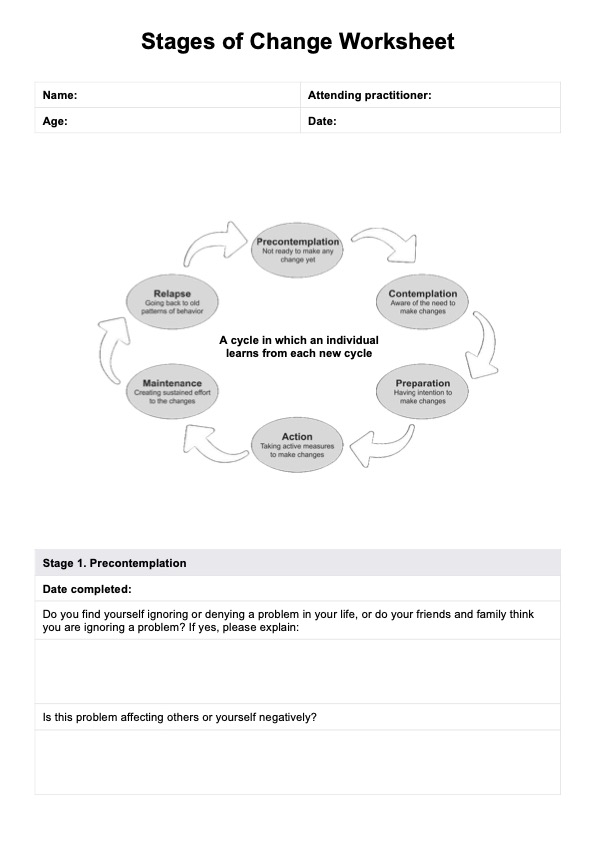The 6-Stage Model of Change, also known as the transtheoretical model (TTM), is a cyclical model that describes how people acquire new habits or modify problem behaviors over time. The six stages are: precontemplation (no intent to change in the next six months), contemplation (intending to change in the next six months), preparation (intending to take action in the immediate future, usually next month), action (actively modifying behavior or environment), maintenance (working to prevent relapse, usually after six months of change), and termination (no temptation to relapse and 100% confidence in change, though this stage is less commonly achieved and sometimes omitted in practical application).

Stages Of Change Worksheets
Access our Stages of Change Worksheets to help clients work through the process of change and increase commitment to positive behavior.
Stages Of Change Worksheets Template
Commonly asked questions
The ten processes of change are the covert and overt activities and strategies people use to progress through the stages of the transtheoretical model, representing the how of change. They are divided into two categories: experiential processes (mostly used in the earlier stages, like contemplation), which include consciousness raising, dramatic relief, environmental reevaluation, self-reevaluation, and social liberation; and behavioral processes (mostly used in the later stages, like action), which include self-liberation, helping relationships, counterconditioning, reinforcement management, and stimulus control. Applying these processes effectively and at the right time is key to successful and sustained behavior change.
The R's are a set of common characteristics or reasons that describe why an individual might be stuck in the precontemplation stage, where they have no intention of making a behavior change in the near future. These characteristics are: reluctance (due to a lack of knowledge or inertia), rebellion (resistance to being told what to do), rationalization (using intellectual arguments or cognitive distortion to justify the status quo), and resignation (feeling overwhelmed or believing the problem is insurmountable).
EHR and practice management software
Get started for free
*No credit card required
Free
$0/usd
Unlimited clients
Telehealth
1GB of storage
Client portal text
Automated billing and online payments











